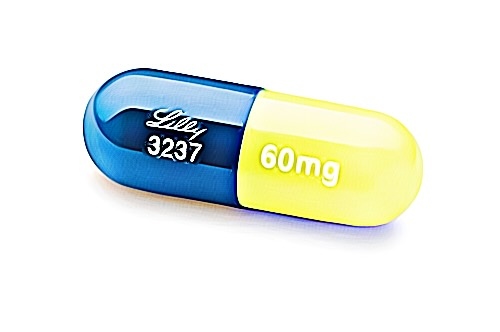Amid the different aspects of America’s drug crisis that have come to light in recent years, one of the more severely-unrecognized battles that rage on today is Cymbalta addiction.
Although this prescription drug is widely renowned for its ability to provide nerve pain relief, the spotlight has now turned to the culture of abuse that it has caused over the past years. With thousands struggling with various degrees of Cymbalta addiction, it’s important to keep yourself informed and protect you or your loved ones from this growing epidemic—an effort that requires going deeper into the details.
To best answer the question of how one can beat an uncontrollable dependence on the prescription medication in question, it is vital to understand the factor that stands in the way: Cymbalta withdrawal.
What is Cymbalta?
Cymbalta is a prescription drug, one of the most common types of pharmaceutical products today in the American market that is made and manufactured by dozens of brands.
Alternatively known as duloxetine, this prescription drug is part of a class of drugs known as serotonin-norepinephrine reuptake inhibitors—or SNRIs, for short. Because it works by restoring the natural balance of chemical neurotransmitters in the brain, a growing number of patients have included the medication in their treatment regimen.
Compared to other types of substances that have been linked to addiction cases in the United States, this type of SNRI can be easily purchased at a drugstore or pharmacy with no more than a prescription and an attached ID. While current rates of Cymbalta addiction are still at a controllable level, its availability may foster a gradually-worsening situation if not enough at-risk citizens are educated about it.

Cymbalta side-effects
Like any other strong and purpose-specific drug on the market, duloxetine holds a wide range of different side effects when abused. Although there are primary effects that are pleasant in nature, it is important to understand that this medication can cause various negative and potentially harmful side effects.
Here are the most prominent complications and harmful conditions of the prescription drug that range from mild to severe:
- Dry mouth
- Nausea
- Muscle weakness
- Vomiting
- Constipation
- Tremor
- Loss of appetite
- Fatigue
- Low blood pressure
- Weight loss
- Excessive sweating
- Skin rash
- Lightheadedness
Although not as commonplace as the side effects mentioned above, abusing the SNRI in question has also been shown to result in complications such as sexual dysfunction, colitis, and liver damage. However, it’s worth noting that these side-effects are rare and usually only occur in chronic, long-term users.
In recent years, a growing number of studies have also shed light on a potential set of additional side effects that are experienced with Cymbalta abuse because of evolving behaviors. For instance, abusers or addicts will often crush or mix the drug with liquid for an immediate effect. In fact, this is a habit that goes against dosage recommendations. When done enough, diverted usage habits will likely result in a heightened risk of serious complications, such as abdominal cramping, convulsions, and severe skin reactions!
Cymbalta withdrawal symptoms
Similar to nicotine or other habit-forming substances, duloxetine has the potential to foster a certain degree of dependence that can lead to the formation of withdrawal symptoms. Medical research itself has established that physiological effects related to quitting will typically appear within the two to four days after the final dosage—a common problem that Addiction IO’s partner centers manage with controlled tapering.
Whenever this SNRI is abused, promptly quitting or putting off use after some time can be difficult because the brain will take a while to acclimate to the absence of the substance. From a neurological standpoint, a strong wave of withdrawal symptoms will eventually appear because the brain has to adjust to lower levels of serotonin and norepinephrine.
Although withdrawal experiences can vary depending on different factors, such as frequency of use, dosage, and any other physical-health related factors, here is a list of common symptoms that are common to most cases:
- Dizziness
- Headaches
- Nausea
- Vomiting
- Loss of appetite
- Fever
- Cold sweats
- Irritability
- Anxiety
- Difficulty sleeping
In the case of headaches, nausea, and vomiting, these three symptoms are especially strong in the weeks following a final dose—with some cases seeing prolonged periods of up to a month. Additionally, recent research has discovered that Cymbalta withdrawal has caused distressing sleep-related symptoms, such as nightmares, disturbing dreams, and whole-body paresthesia (pins and needles).
What is Cymbalta used for?
From a technical standpoint, duloxetine is used to treat several different neurological problems in the form of common mental health conditions, such as:
- Generalized anxiety disorder
- Depression
- Manic-Depressive (Bipolar) disorder
- Nerve damage pain related to depression
Apart from aiding in mental health treatment, it is also used to help people with nerve pain and diabetes. In fact, in some experimental cases and situations, duloxetine has shown to be effective for those with ongoing pain due to chronic and moderate or severe medical conditions, such as fibromyalgia, arthritis, or chronic back pain.
When consumed, this drug can improve mood, sleep, appetite, and energy levels while also decreasing nervousness—all key benefits that are potential addiction points. However, beyond providing a form of relief for one’s mental state, another common benefit it has which fosters addiction is its pain relief (which is also common with opioids and other forms of pain relief medication).
Cymbalta for pain
As previously mentioned, one of the primary reasons Cymbalta is prescribed (and why many people face the risk of abusing it) is that it is effective in terms of treating chronic musculoskeletal pain.
Based on this clinical study, duloxetine has been shown to be effective when used for the treatment or medication of common types of musculoskeletal pain seen in cases of osteoarthritis and lower back issues. The effects of this SNRI were further verified with another 13-week study that involved adults with chronic low back pain. This allowed researchers to determine these findings based on their pool of participants:
- Nearly 45% of people who took Cymbalta had at least a 30% reduction in their pain score.
- About 30% of people who took a placebo dosage of the prescription had at least a 30% reduction in their pain score.
Cymbalta for anxiety
Currently, Cymbalta enjoys FDA approval for treating generalized anxiety disorder (GAD), thanks to its neurological and psychological benefits achieved through its formulation.
In this clinical study that sought to further understand the effects of the prescription medication on GAD patients, researchers gave participants steady dosages of the SNRI for 26 weeks. During the trial phase, participants whose conditions improved with the drug were then randomly chosen to keep taking Cymbalta or switch to a placebo dosage.
Cymbalta half-life
Compared to other habit-forming prescription medications, the drug in question has a noticeably-shorter half-life because of its formulation and medical properties.
On average, the half-life of duloxetine spans twelve hours, which means that it eventually leaves a patient’s system at a much higher rate. In fact, among the various antidepressants on the market, this drug has the second-fastest rate of dissipation, which is why its users experience higher rates of withdrawal effects.
Conclusion
An addiction to Cymbalta can be one of the most dangerous and troubling forms of drug dependency and abuse because of the difficulty that its withdrawal symptoms pose. Through the help of the right intervention, proactive solutions, and proper information, it will become much easier to counteract such a problem in the long run!
Sources:
https://dailymed.nlm.nih.gov/dailymed/drugInfo.cfm?setid=2f7d4d67-10c1-4bf4-a7f2-c185fbad64ba




